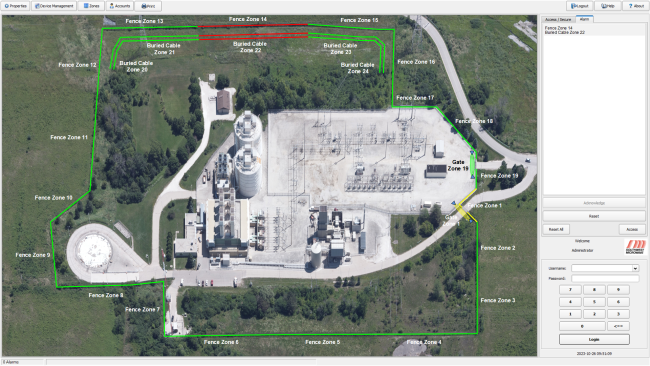
The Safety and Security Paradox
Utility Security Expert Jim Willis Explains how Understanding the Difference Between Safety and Security Can Help you Better Achieve Success in Each
In this inaugural issue of Utility Security magazine, I felt the best place to start this column was with a foundational understanding from which we can build later. Let’s begin with a discussion of the paradox between safety and security. Many people see safety and security through the same lens and use the words interchangeably, but that’s a mistake. They’re different in concept and application. The terms themselves are paradoxical; they’re both ambiguous in concept and, at the same time, laser-focused in application.
Let’s look closer at safety to see just how ambiguous the two terms are. At the conceptual level, safety is a vague term that means completely different things to different people. It’s perceived differently by an assembly-line worker, a pharmaceutical employee and a utility professional. In application, someone who wears a hazmat suit at work responds differently to the word than someone who stocks shelves for a living or is a teacher or utility professional.
The same ambiguity applies to the concept of security. Security is a nebulous term that invokes starkly different meanings and images, even within the utility sector. The word is so ambiguous that a person will often be discussing one aspect of security while the person they’re speaking to is visualizing another. In fact, I’ll hazard a guess: When the word “security” is brought up at your utility, you immediately think of cybersecurity. But what about facility security, infrastructure security or operational security? They’re just as important and complex but seldom discussed.
When used individually, the terms “safety” and “security” are vague enough; when used interchangeably, their ambiguity multiplies. You may be thinking this is just a distinction without a difference. Since the objective of security is to keep us safe, that makes it a safety practice and therefore safety. Right? Well, no, it’s not; the relationship is more complicated and paradoxical than that.
The next element of the paradox is that they are two sides of the same coin. Safety and security share the same goal: protection. But this is where their first significant difference appears. Safety is primarily protection from ourselves, while security is protection from others.
Safety for utility professionals focuses on the circumstantial risks in our work environment. Functionally, safety takes on a multitude of forms, including practices and procedures, equipment and devices, and mindsets and processes; the list goes on and on. But what they all have in common is that we control their application. We decide how much risk we’re willing to take and what safety rules we’re willing to bend or break. But the potential consequences are known factors, and the decision to ignore safety rules is always deliberate. It’s that simple.
Security is protection against intent. It includes protecting everything—from buildings and grounds to equipment and material, infrastructure and facilities, and information and people—against the countless attempts of intentional harm inflicted by others. While we don’t have control over other people’s actions and never know how someone will respond or react, we can control our preparation and response, and our defense is functional security.
Application is the next element of the safety and security paradox. While both safety and security are protection disciplines that address an array of issues and concerns, their application is entirely different in practice. Safety is protection from indiscriminate danger. A hazard doesn’t choose to target a specific place or person. It’s simply that, a hazard. A collapsing trench doesn’t consider its victims. And in practice, we don’t have to outsmart the trench; we just have to mitigate the hazard.
Security is protection from deliberate threats. The victim of aggression may be a random target of opportunity or the casualty of a premeditated attack. But ultimately, the decision to take action against a specific animate or inanimate target is a deliberate choice during execution. The act of driving a vehicle into a trench in an attempt to harm the workers in it is intentional. In practice, we have to defend against the aggressor. And we have to get it right 100% of the time; the aggressor only has to get it right once.
The final element of the paradox we’ll consider is the differences in response. Safety is based on rules and procedures derived from verifiable historical actions and consequences. Safety rules are rigid and static because, though circumstances change, the linear cause-and-impact relationships of safety don’t change. The static nature of safety issues makes them procedure-based.
Security has to take into account the unpredictable nature of other people. There is no linear cause-and-effect relationship. This lack of linearity between action and impact means security responses must be fluid and responsive, not static. The fluid nature of threat response means security must be approach-based.
What I hope you’ve learned is that the relationship between safety and security is a paradox. And though both are protection entities, they differ in application, practice and response. In future columns, we’ll look at ways to make safety and security practices work in unison to enhance the protection of utility workers. We’ll also examine the four main areas of utility security and the critical skills every security professional needs. I hope you’ll join us.
About the Author: Jim Willis is president of InDev Tactical, a security training and consulting firm. He is a utility engineer, industry professional, credentialed homeland security specialist and anti-terrorism expert. If you want to discuss utility-focused security training or consulting assistance, you can reach Jim at 703-623-6819 or jim.willis@indevtactical.net.